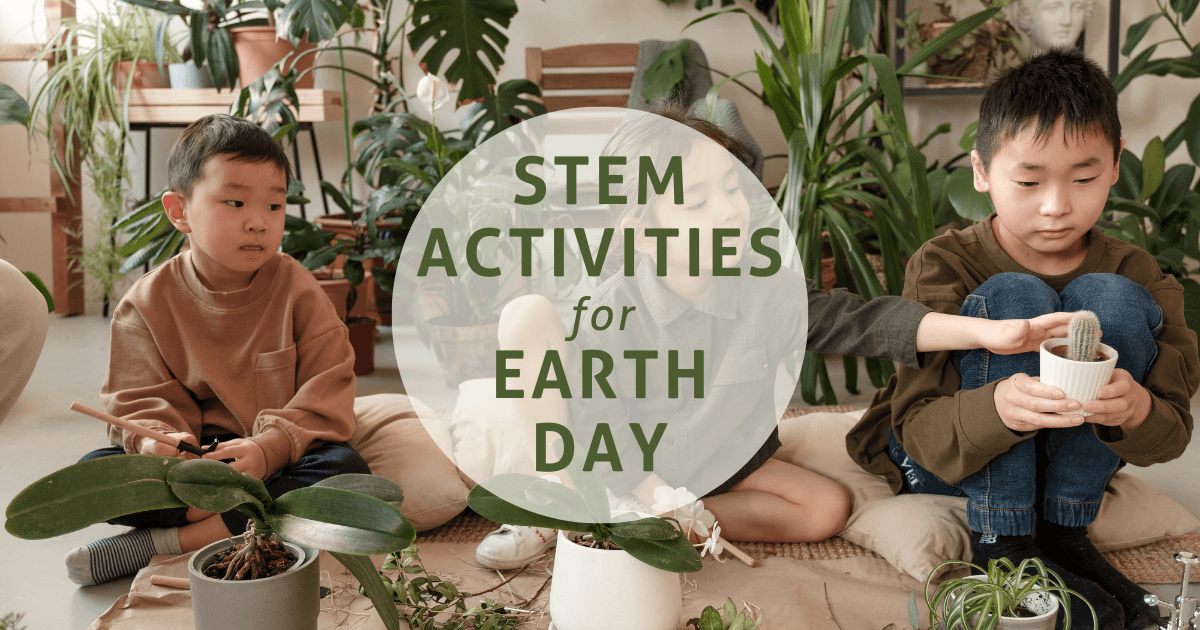Earth Day has grown into a huge global event since its inception in the 1970s. Many of Earth Day’s biggest proponents line city streets for festivals every year to advocate for the preservation of the planet we call home. Earth Day is so popular, in fact, that it's spread to more than 180 countries around the world—made possible, in large part, by technology that sheds light on the climate ramifications of human activity and shows us how to minimize our global footprint. As such, Earth Day STEM activities, experiments, and games can combine the fun of spending time with nature with the critical importance of going green.
Earth Day Project Ideas for the STEM Classroom
Earth Day is the perfect holiday for applying both STEM principles and project-based learning. After all, the goal of PBL is using creativity to solve real-world problems. And where are there real-world problems? In the environment, of course! Everything from solar solutions to irrigation tactics is a product of critical and creative thinking. Now, it’s time to apply those principles as you and your students celebrate Earth Day with some classroom STEM activities of your own.
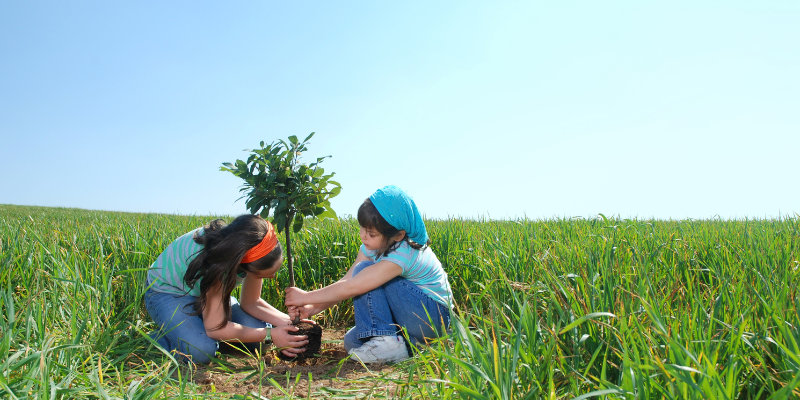
Starting with Background Knowledge
Many natural processes contribute to the overall health of our Earth, such as carbon cycling, the water cycle, and solar energy. One effective way to illustrate the current state of our environment is by having students research how these processes affect conditions of the planet over certain periods of time and how they have changed for better and worse. In activities such as this, children take an analytical approach to collectively solve problems the Earth is facing. Asking thought-provoking questions guides students down new avenues of project-based thinking. By employing their own formal and informal research methods, students can see the effects of their actions on the climate and, more importantly, how they can use collaboration, creativity, and technology for good.
Green Activities for Elementary School
Even the youngest kids can grasp concepts of environmental literacy. To learn about recycling, they might make their own recycled paper in this messy but engaging activity. First, soak used paper in a bowl for several hours or even overnight. Then, wring out the extra water and blend the paper into pulp. Spread the pulp onto a flat but porous surface, such as a piece of window screen, a flat sieve, or nylon stretched over a frame. Press the new paper onto the surface until it's no longer dripping, then allow it to dry overnight. The next day, you'll have brand new paper for the kids to draw on!
Another great STEM activity to teach elementary students about Earth Day is a practical illustration of the water cycle. Fill a large bowl with water, grass, and dirt, then place an empty smaller bowl inside. Cover the large bowl with plastic wrap, secure it with a rubber band, and place a few coins in the center so the plastic wrap dips toward the small bowl. Then place the entire contraption outside in the sun. If you're in a cooler environment, a sunny window will also do just fine. As the water in the bowl warms, it rises as vapor to the plastic wrap. Since the plastic is cooler, the water condenses into droplets that then roll down the plastic wrap and drip into the smaller bowl. Finally, ask the students a few comprehension questions. Why did the grass and dirt not evaporate? What made the water turn from vapor back into droplets? Where do they see this kind of process happening in the environment?
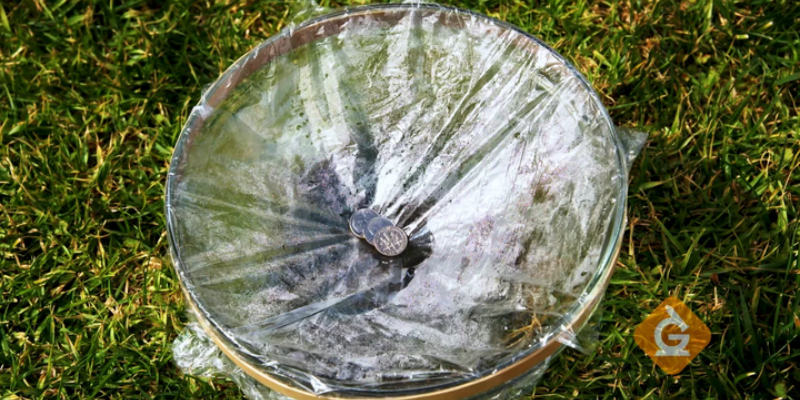
Earth Day STEM in Middle School
Recycling becomes the new thing in this middle school science activity. Provide cardboard and other recyclables and have students design and build a solution to an environmental problem. Perhaps they'll craft a model wind turbine from cardboard or make a used plastic water bottle into a planter. They might even use MakeDo tools to connect their cardboard pieces more easily. While they work, ask students to think about what environmental problem their creation could solve. Reusing a water bottle removes plastic from the environment, for example, while providing a home for an oxygen-producing plant.
Recycling projects teach kids a lot about using what we already have—and one resource we have in abundance is sunlight. To illustrate the power of solar energy, have your middle school students construct a solar oven. Line a cardboard box, such as a pizza box, with black construction paper to absorb light and heat. Cut a flap in the lid of the box and fold it back so that the flap stands up when the box is closed. Then, line the flap with aluminum foil to reflect the sun's rays down into the box.
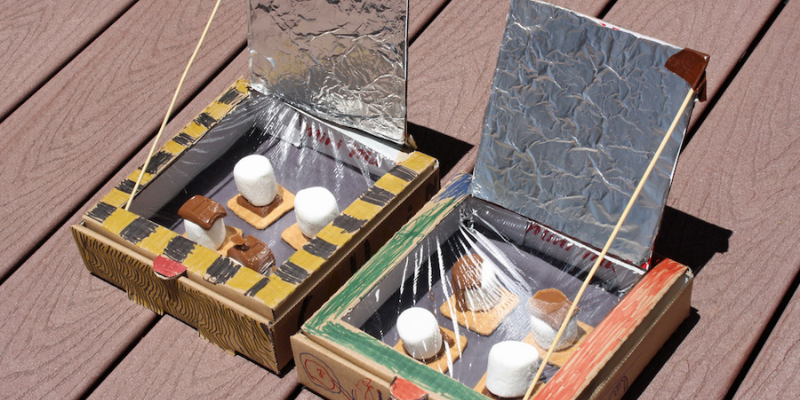
Next, use plastic wrap to cover the opening you made when you cut the flap in the lid. This allows sunlight into the box. Now, you're ready to make a snack! Place the solar oven in a sunny spot, angling the lid to reflect the most sunlight possible into the box (you may need to use a stick or ruler to prop it up). Students will watch as the sun melts cheese or cooks a hot dog. If food isn't allowed in the classroom, you can easily illustrate the principle by placing a thermometer inside and measuring the temperature before and after it spends time in the sun.
Teaching High Schoolers Environmental Literacy
High school students will be able to engage in environmental literacy at a deeper level, so here are a couple STEM activities to try. Host a debate to find the best renewable energy sources. Divide students into teams to research the pros and cons of green energy sources like solar, wind, and geothermal. Then, they'll use their critical thinking and persuasive communication skills to convince their classmates of their position. Or, students could research local environmental organizations and create a presentation to raise awareness. Have students vote on which local organization they'd want to help, then spend a class day volunteering there!
Tap into students' design and engineering skills with a mini composting bin. High schoolers can design and build a small-scale compost bin for the classroom or school cafeteria as they learn about the role of composting in waste reduction. One simple design requires a lidded container, nylon or mesh, a drill, and a hot glue gun. First, students should drill holes in the lid of the container for air flow. Then, use hot glue to attach mesh or nylon to the lid to cover the holes. This will prevent bugs from getting into the compost bin. Students should place a small amount of starter dirt into the bin, then start adding food scraps from in-class snacks or their own lunches. Pro tip: break these scraps into smaller pieces for faster composting, and be sure to stir about once a week to aerate the soil. Your class can also add bokashi bran to prevent smells.
Growing a Greener Community
Incorporating Earth Day into a STEM curriculum might mean getting involved in events around your state or town. Check out the official Earth Day website's list of environmental initiatives, such as restoring Earth's forests and reducing plastic consumption, for some ideas. Or sign up for their volunteering emails to receive notifications on local events near you. You could also reference Global Stewards' Calendar of Global Environmental Events to find opportunities to help the Earth year round. Eco-friendly community STEM projects range from grocery bag recycling to a local park clean-up or setting up a cafeteria compost. No matter the size, it’s incredibly beneficial to introduce kids to environmental service projects, especially this time of year. They'll hone key problem-solving, collaboration, and team-building skills, then apply their knowledge to later learning. Classroom Earth Day celebrations are far-reaching, fun, and beneficial to STEM education.
Incorporating MakerEd and STEAM into Green Learning
Green projects incorporate purposeful approaches to problem solving, and educators can enhance them by adding STEAM tools. It's easy to continue Earth Day education with STEM activities that enable students to use their hands for exploring alternative energy, green engineering, life cycles, and more. These tools foster an appreciation and love for the Earth that will stick with students throughout their lives. Here are some of our favorite solutions to go green with STEM.

First up, the Terrapin Easi-Scope Digital Microscope enables kids to get up close and personal with nature. It is no secret that kids are fascinated by the outdoors. Empty out the pockets of any second grade student, and chances are, you'll find rocks, pinecones, dirt, and maybe bugs. Now, they can see these treasures in a whole new way. Terrapin's egg-shaped microscope is easy for kids to hold and also use. Simply connect it to a computer or wireless device and watch everyday objects expand into new worlds to explore. With up to 43 times magnification, you can see the grains on the surface of rocks or the individual hairs on the head of a bee. Seeing the beauty of nature in such intricate detail can fill students with a new appreciation for the world around them.
Keep the outdoor learning going with the versatile Tuff-Bot. Also from Terrapin, this rugged robot combines coding and play, with big wheels that allow it to traverse any terrain. Take it in the woods or on the playground without worrying about its durability or power. Using the Tuff-Bot (Grades 3+), students can program precise movements, like 45-degree turns or commands with up to 256 steps. Also, if you're worried about them getting distracted, screen-free programming keeps them present in nature while learning STEAM principles.
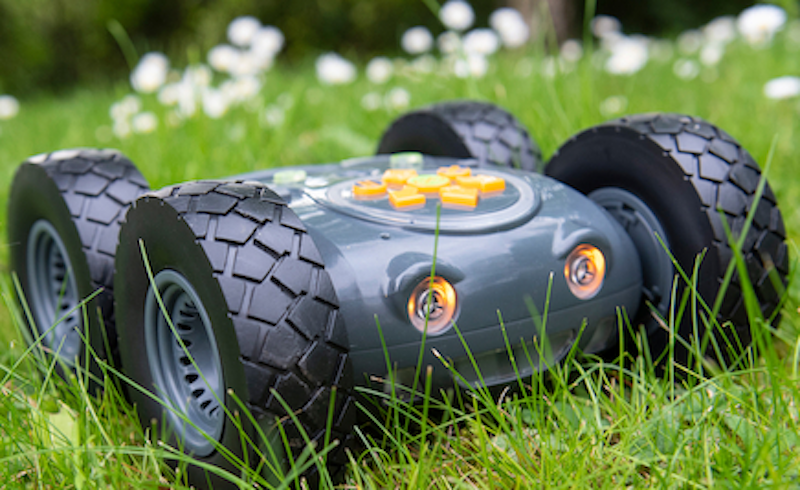
Another favorite environmentally focused MakerEd product is the Snap Circuits Green Energy kit. Its set of included activities helps kids learn about electricity and energy as they put together safe and interactive circuits. They'll learn about some sources of electricity in their homes or schools, connecting these energy concepts to their own lives. And, they can also explore clean energy sources, like windmills, with the kit's educational manual. How does water store energy? What makes a wind turbine work? How is this energy converted between forms? With 125 different projects, kids can answer all these crucial questions—and more—in an age-appropriate, Earth-friendly way.
Quick Tips for a Greener Classroom
Everywhere, in all aspects of our daily routines, we have the chance to mitigate climate change. Today, there are plenty of technology-enabled resources that classrooms can employ to enjoy an environmentally friendly learning experience. In schools, where tons of paper is used (and wasted), it's beneficial for students and educators alike to consider where they can conserve paper. While going paperless is a great goal, especially with the benefits of hands-on learning, we know printing is often necessary. But there are ways for educators to alleviate the environmental implications of excessive printing. For instance, they can team up with students to create a recycling program. Not only will kids learn the benefits of recycling (and the ramifications of wasting materials and littering), they’ll help the community by engaging in eco-friendly practices and spreading awareness.
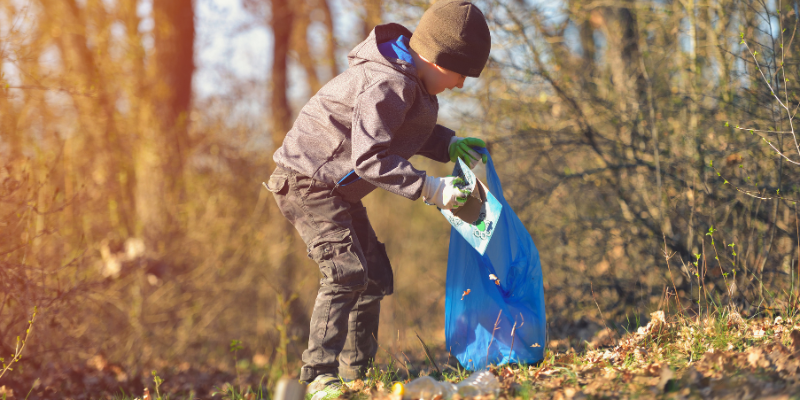
Lessons around conservation are a good way to incorporate project-based STEM learning for Earth Day. Educators can assign year- or semester-long projects in which all students measure how much paper they’re using, wasting, and recycling. One teacher also suggested working with the town waste management department to brainstorm better environmental practices—chances are, they’d love to help your kids out! And, of course, reuse every material possible. You can easily get children in the habit of conserving products—especially paper. This can spark a dedication to green living by encouraging extended recycling out of the classroom!
How to Make Your EdTech Ecosystem Thrive
Like any ecosystem, the classroom environment needs nurturing and resources to grow and succeed in the wild world of education. Studies show that people who grow up around technology are more adept at integrating it in their daily lives. Because students spend so much time in their classroom environments, it's essential that the tools they use are ones that equip them for a green future. And, most importantly, robust STEM education shapes innovators who'll make a difference in their community and the world. Who knows, maybe the person to solve climate change is in your classroom, putting together their first circuit.
If you are interested in tools that will allow your students to thrive in STEAM learning, contact us for a free consultation. Giving students the quality education they need sounds like it might get costly, but don't worry. With Educator Discount programs, students, educators, parents, and administrators can enjoy access to powerful technology at discounted prices. Now, that's an ecosystem for 21st century learning success!
For the latest EdTech, STEM, and 21st century education news, follow us on Twitter and Instagram. Like us on Facebook, too, or sign up for our newsletter for our latest product announcements and offerings. If you have an idea for an Eduporium Weekly theme, send us a message on social media or comment below.



